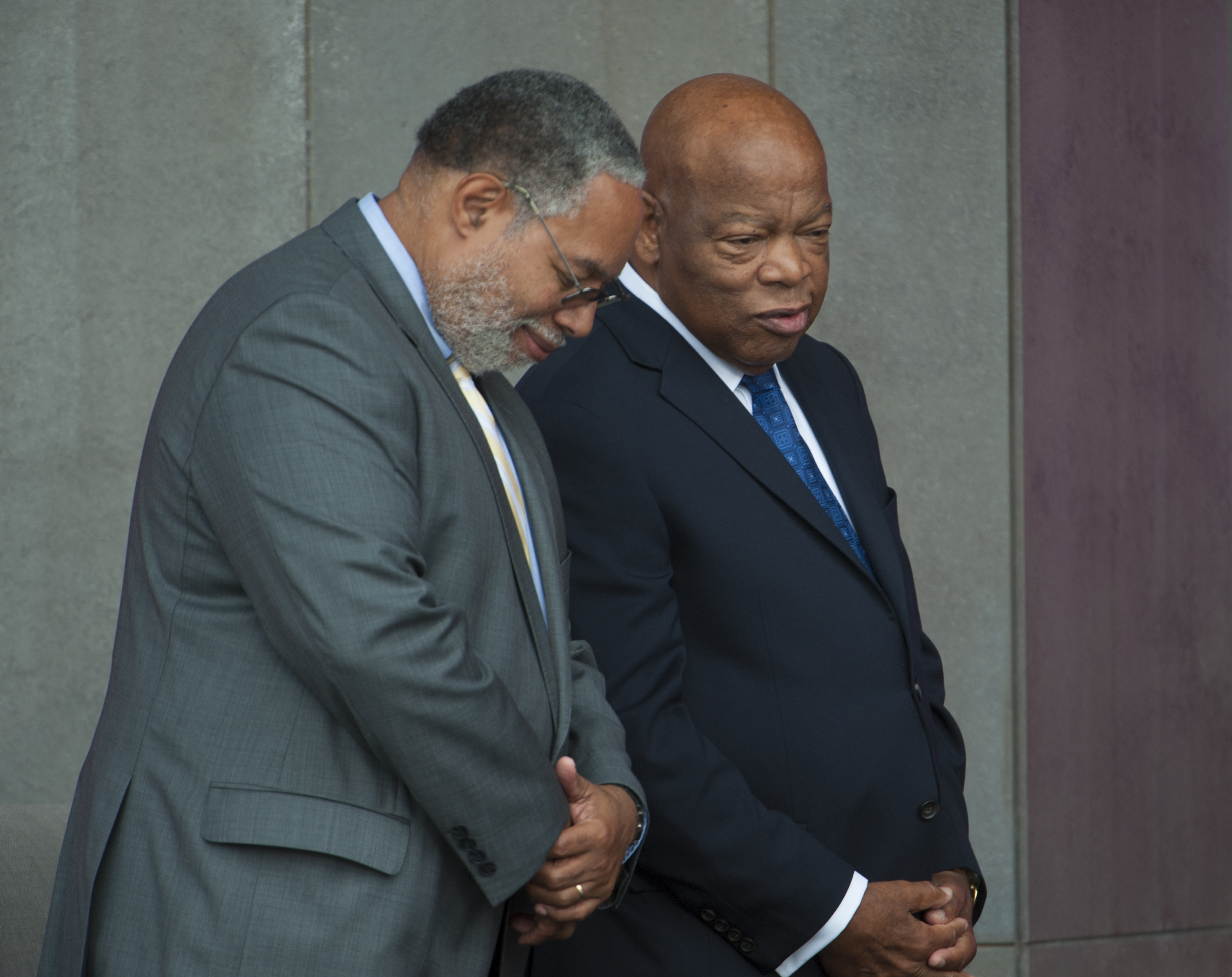Smithsonian Secretary Lonnie G. Bunch Statement on the Death of Congressman John Lewis
I join the world today in mourning the passing of Congressman John Lewis. He was the conscience of a nation and a voice of moral clarity who spent his life challenging the country to live up to its ideals and extend the blessings of liberty to all.
Mr. Lewis was only 25 years old when he risked the ultimate sacrifice on the Edmund Pettus Bridge in Selma, Alabama on “Bloody Sunday.” The national news that night showed the horrific footage of a state trooper savagely beating him with a nightstick. But it also showed Mr. Lewis, head bloodied but spirit unbroken, delaying a trip to the hospital for treatment of a fractured skull so he could plead with President Johnson to intervene in Alabama.
It is hard to imagine such courage at a young age, but at that point he was already a veteran of the civil rights movement and a founding member of the Student Nonviolent Coordinating Committee. He helped organize the 1961 Freedom Rides that rode through the South to protest segregated interstate bus travel and the 1964 Freedom Summer effort to register Black voters throughout the South. He was the youngest person to speak at the 1963 March on Washington, giving a less fiery speech than originally planned, but one that still resonates today with its appeal, “We must say wake up America, wake up! For we cannot stop, and we will not and cannot be patient.”
When he was elected to Congress in 1986, Mr. Lewis brought that same tenacity and passion for social justice to the legislative branch of government. His arrival was lucky for the Smithsonian, as he turned out to be one of the biggest champions of building an African American museum on the National Mall. Mr. Lewis helped keep the project alive in people’s minds by introducing legislation for the museum every year until Congress finally enacted it in 2003. I do not know if the National Museum of African American History and Culture would have happened without him.
I am grateful to have had the opportunity to get to know Mr. Lewis when I returned to the Smithsonian to become the museum’s founding director. After all the years of planning, collecting, and construction were done and the museum was finally finished, I gave him a tour to see what his persistence had helped create. During that emotional occasion, I asked him if he ever despaired––when he was marching, when he was protesting, or when he was being beaten in Selma and thought he might die. He said, “No, you can’t despair. You have to be hopeful.” It was an insight into his character and his abiding belief that the nation could become better than it had been. That we would one day make real the promise of justice and equality just as we had made real the museum.
In 2015, I had the honor of walking with Mr. Lewis on one of his annual pilgrimages back to Selma to recreate that pivotal moment in the civil rights era. It was one of the most poignant and surreal moments of my life. I felt as if I had been transported back in time as I walked with him on the bridge, thinking about the lessons this titan had taught me. The lessons he had taught us all.
Today, let us listen to his words and not despair for his loss. Let us rejoice in all he gave to the country and remember the road he paved for all who aspire to build a more just society. With dignity, with honor, and with courage, John Lewis embodied the better angels of our nature. We are better for having had his wisdom and compassion guiding us. On behalf of the Smithsonian, I send our heartfelt thoughts and condolences to his family.

